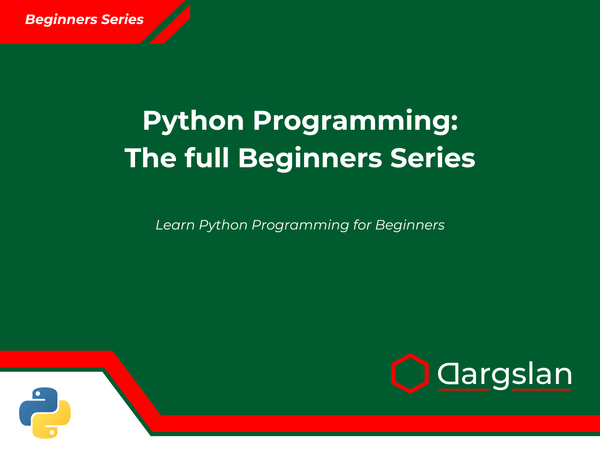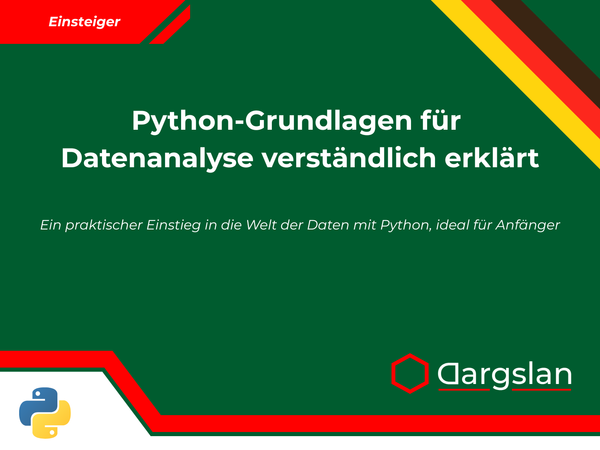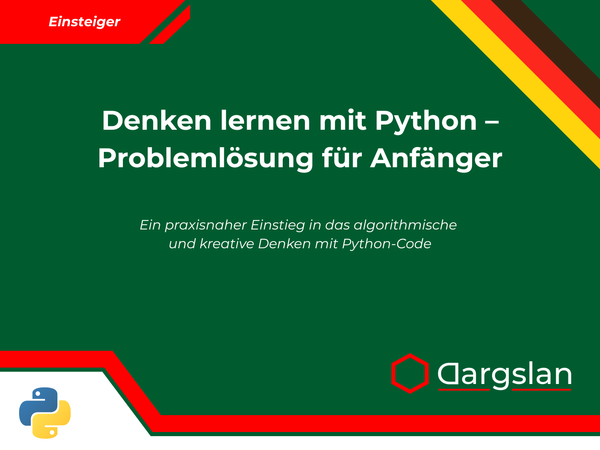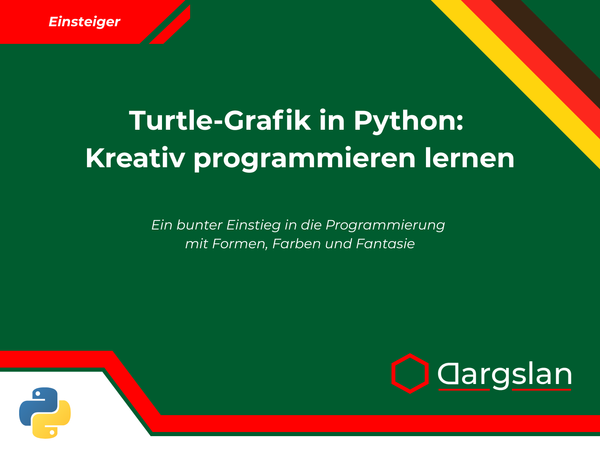Book Review: Intermediate Python File Handling: CSV, JSON, and More
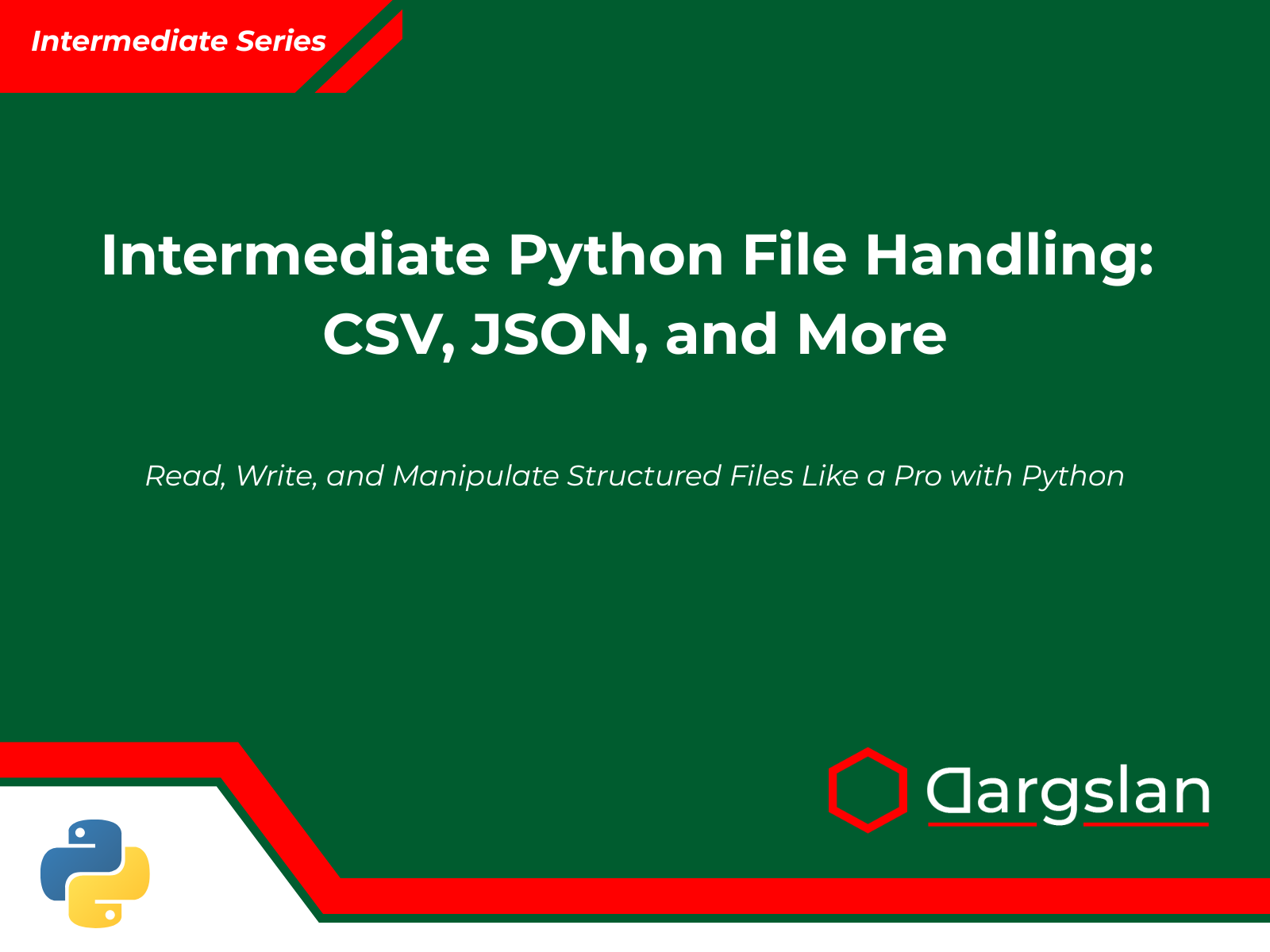
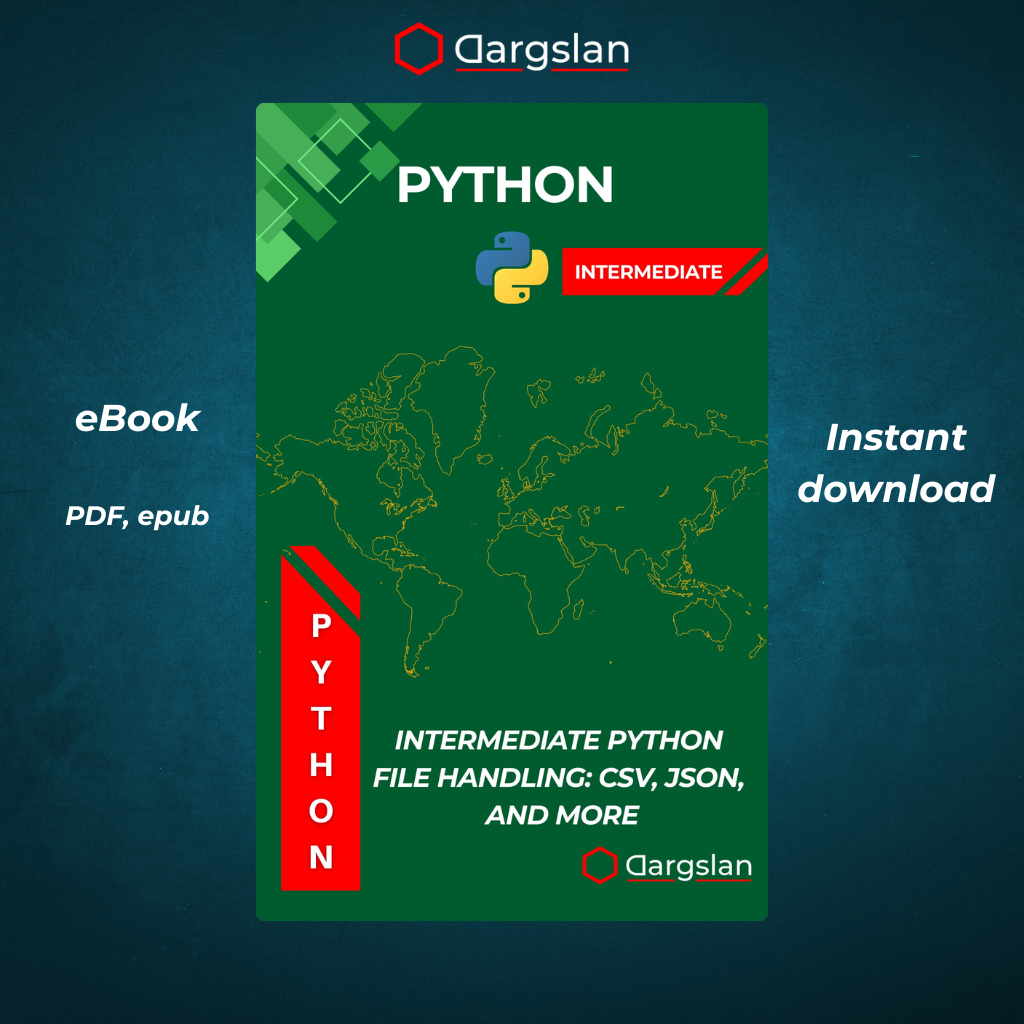
Intermediate Python File Handling: CSV, JSON, and More
Read, Write, and Manipulate Structured Files Like a Pro with Python
Comprehensive Review: "Intermediate Python File Handling: CSV, JSON, and More" by Dargslan
Introduction: Bridging the Knowledge Gap in Python File Manipulation
In the vast landscape of Python programming resources, few books address the critical intermediate skills gap as effectively as "Intermediate Python File Handling: CSV, JSON, and More." This comprehensive guide takes readers beyond basic file operations into the professional-grade techniques needed for real-world applications. As data becomes increasingly central to modern programming, mastering structured file handling has never been more essential.
Dargslan's approach is refreshingly practical, focusing on the file formats programmers encounter daily while providing enough depth to handle complex data manipulation challenges. The book's subtitle—"Read, Write, and Manipulate Structured Files Like a Pro with Python"—perfectly encapsulates both its scope and aspiration.
This review will examine how effectively the book delivers on its promises, analyze its content and pedagogical approach, and help you determine if it's the right resource for your Python development journey.
Target Audience: Who Should Read This Book?
Before diving into the content analysis, it's worth clarifying who will benefit most from this resource:
- Intermediate Python programmers looking to strengthen their file handling capabilities
- Data analysts and scientists seeking more efficient ways to process structured data files
- Web developers working with JSON-based APIs and data interchange
- Automation specialists building file processing workflows
- Software engineers transitioning to Python from other languages
The book assumes basic Python knowledge, including familiarity with fundamental syntax, basic data structures, and simple file operations. Complete beginners might struggle with some concepts, while advanced Python experts might find portions of the early chapters too familiar. However, the sweet spot is remarkably wide, making this book accessible to a broad range of Python practitioners.
Content Analysis: A Chapter-by-Chapter Breakdown
Setting the Foundation
The book begins with two foundational chapters that establish context and refresh essential skills:
Chapter 1: Why File Handling Matters in Python
The opening chapter effectively motivates the subject by connecting file handling proficiency to practical outcomes across various domains. Rather than jumping straight into code, Dargslan wisely establishes the business case for mastering these skills. The author connects file handling to data analysis, web development, automation, and application development, showing how these techniques serve as building blocks for larger systems.
Chapter 2: Recap – Working with Plain Text Files
This refresher chapter ensures all readers start from a common baseline. It covers the file object, basic reading and writing operations, context managers, and encoding considerations. For intermediate programmers, this serves as an efficient review that fills potential knowledge gaps, while less experienced readers will appreciate the clear explanations of foundational concepts.
CSV Mastery
The next two chapters provide a deep dive into CSV processing:
Chapter 3: Reading and Writing CSV Files
This chapter introduces Python's built-in csv module with thorough examples of reading, writing, and manipulating tabular data. Dargslan covers:
- Reading CSV files with various reader functions
- Writing data to CSV formats
- Handling headers and column access
- Working with different delimiter patterns
- Basic transformation techniques
The examples progress naturally from simple operations to more complex scenarios, with clear explanations of when to use different approaches.
Chapter 4: Advanced CSV Handling
Building on the previous chapter, this section tackles the real-world challenges of CSV processing:
- Custom dialects for non-standard CSV variations
- Type conversion and data validation
- Handling missing or malformed data
- Memory-efficient processing of large files
- Performance optimization techniques
- Integration with other libraries like pandas
This chapter particularly shines in addressing the messy realities of CSV files "in the wild," preparing readers for the imperfect data they'll encounter in professional contexts.
JSON Expertise
The middle section transitions to JSON, the ubiquitous format for web APIs and configuration:
Chapter 5: Working with JSON Data
This comprehensive introduction to JSON handling covers:
- The JSON data model and its Python equivalents
- Using the
jsonmodule for serialization and deserialization - Custom encoders and decoders
- Handling complex data types
- Pretty printing and formatting options
- JSON schema validation
The author effectively explains both the mechanics and the underlying principles of JSON processing, giving readers the conceptual framework to handle varied JSON challenges.
Chapter 6: Updating and Merging JSON Files
This advanced chapter addresses sophisticated JSON operations:
- Strategies for updating nested JSON structures
- Deep merging techniques
- JSON patching operations
- Transformation and filtering
- Performance considerations for large JSON files
- Error handling for malformed JSON
By focusing on these complex operations, Dargslan addresses tasks that intermediate programmers frequently struggle with but that rarely receive detailed coverage in general Python texts.
Expanding Horizons
The next two chapters broaden the scope beyond CSV and JSON:
Chapter 7: Reading and Writing Other File Types
This chapter introduces additional file formats relevant to Python developers:
- XML processing with ElementTree and lxml
- YAML configurations with PyYAML
- INI files and ConfigParser
- Working with Excel files using openpyxl
- Binary file basics
- Compressed file handling
Rather than attempting exhaustive coverage, Dargslan focuses on transferable patterns and practical examples that demonstrate how to adapt file handling principles across formats.
Chapter 8: File Paths and Directories
This often-overlooked topic receives thorough treatment:
- Cross-platform path handling with os.path and pathlib
- Directory operations (creation, listing, traversal)
- Pattern matching and file searching
- Temporary file management
- File metadata and properties
- Monitoring file changes
The chapter's emphasis on cross-platform compatibility addresses a critical source of bugs in Python file operations, particularly for code that needs to run across Windows, macOS, and Linux environments.
Professional Practices
The final instructional chapters focus on production-quality implementation:
Chapter 9: Error Handling and Clean Code Tips
This essential chapter elevates the book from technical manual to professional development guide by addressing:
- Defensive programming for file operations
- Graceful error recovery strategies
- Context managers for resource management
- Testing file-dependent code
- Logging best practices
- Code organization patterns
By emphasizing robustness and maintainability, this chapter helps readers write file handling code that will stand up to real-world demands.
Chapter 10: Mini Projects and Real-World Workflows
The book concludes with practical projects that integrate multiple techniques:
- Building a data transformation pipeline
- Creating a configuration management system
- Implementing a log analyzer
- Developing a web API that consumes and produces JSON
- Constructing a file synchronization tool
These projects demonstrate how individual skills combine into comprehensive solutions, providing templates that readers can adapt to their own needs.
Reference Appendices
Four appendices extend the book's utility as an ongoing reference:
- File Format Cheatsheet
- Common Python File Handling Errors Explained
- Performance Tips for Large File Processing
- Bonus Tools
These sections transform the book from a one-time read into a durable resource that continues providing value long after initial completion.
Pedagogical Approach: How the Book Teaches
Dargslan's teaching strategy balances several elements that enhance the learning experience:
Progressive Skill Building
The book employs a spiral learning approach, where concepts are revisited with increasing depth and complexity. Each chapter builds on previous knowledge while introducing new techniques, creating a sense of continuous growth rather than disconnected topics.
Practical Problem-Solving
Rather than presenting techniques in isolation, the author consistently frames them as solutions to realistic problems. This problem-oriented approach helps readers understand not just how to implement methods but when and why to use them—a crucial distinction for intermediate-level learning.
Robust Code Examples
The code examples throughout the book reflect professional practices rather than oversimplified demonstrations:
# Instead of simplistic examples like:
with open('data.csv', 'r') as file:
reader = csv.reader(file)
for row in reader:
print(row)
# The book provides robust implementations:
def process_csv(filename, encoding='utf-8', errors='strict'):
"""Process CSV file with proper error handling and encoding support."""
try:
with open(filename, 'r', encoding=encoding, errors=errors) as file:
reader = csv.reader(file)
header = next(reader, None)
if not header:
return []
records = []
for row_num, row in enumerate(reader, start=2):
try:
if len(row) != len(header):
logging.warning(f"Line {row_num}: Column mismatch, expected {len(header)}, got {len(row)}")
continue
record = dict(zip(header, row))
records.append(record)
except Exception as e:
logging.error(f"Error processing row {row_num}: {e}")
return records
except FileNotFoundError:
logging.error(f"File not found: {filename}")
return []
except UnicodeDecodeError:
logging.error(f"Encoding error in {filename}. Try different encoding.")
return []
except Exception as e:
logging.error(f"Unexpected error processing {filename}: {e}")
return []
This approach shows readers not just basic syntax but production-quality implementations that handle edge cases and errors gracefully.
Comparative Analysis
When multiple approaches exist for a task, Dargslan presents them side by side with clear discussions of their trade-offs:
- Performance characteristics
- Code readability
- Memory efficiency
- Python version compatibility
- Error susceptibility
This comparative approach helps readers make informed decisions rather than simply following prescribed solutions.
Technical Depth and Accuracy
The book achieves an impressive technical depth without becoming overwhelming. Key strengths include:
Comprehensive CSV Coverage
The treatment of CSV handling goes well beyond the basics to address real-world challenges:
- Non-standard dialects and inconsistent formatting
- Performance optimization for large files through chunking and generators
- Integration with other libraries and frameworks
- Character encoding issues and solutions
JSON Mastery
The JSON chapters similarly provide exceptional depth:
- Complex transformation and merging strategies
- Schema validation techniques
- Performance considerations for large documents
- Custom serialization for non-standard types
Cross-Version Compatibility
Throughout the book, Dargslan addresses both Python 3 (the primary focus) and Python 2 considerations where relevant. This pragmatic approach helps readers working in environments with legacy code while encouraging modern practices.
Performance Awareness
Unlike many programming texts that focus solely on functionality, this book consistently addresses performance implications:
- Memory profiling for large file operations
- Benchmarking different approaches
- Streaming techniques for constrained environments
- Optimization strategies backed by measurement
Visual Presentation and Organization
The book's layout enhances learning through thoughtful organization:
- Clear Typography: Code blocks are distinctly formatted with syntax highlighting, making them easy to distinguish from explanatory text.
- Effective Diagrams: Complex concepts like file object hierarchies and JSON transformation workflows are illustrated with intuitive diagrams.
- Callout Boxes: Important warnings, tips, and best practices are highlighted in special boxes that draw attention to critical information.
- Consistent Structure: Each chapter follows a logical progression from concept introduction to advanced application, creating a predictable learning rhythm.
Strengths and Highlights
Several aspects of "Intermediate Python File Handling" stand out as exceptional:
Practical Error Handling
The book elevates error handling from an afterthought to a central concern, reflecting professional coding practices. The dedicated attention to anticipating and managing file-related errors prepares readers for real-world scenarios.
Real-World Examples
Examples throughout the book feel drawn from genuine development scenarios rather than contrived demonstrations. This authenticity helps readers connect concepts to their own projects.
Performance Consciousness
From streaming large files to optimizing I/O operations, the book consistently addresses performance implications of different approaches. This attention to efficiency prepares readers to handle data at scale.
Integration Perspective
Rather than treating file handling as an isolated skill, Dargslan consistently shows how it integrates with broader programming concerns like application architecture, testing, and deployment.
Areas for Improvement
While the book excels in many areas, a few aspects could be enhanced:
Cloud Storage Integration
As data increasingly moves to cloud platforms (S3, Azure Blob Storage, Google Cloud Storage), more guidance on adapting traditional file handling patterns to these services would increase the book's forward-looking value.
Asynchronous Operations
With asyncio becoming more prevalent in Python development, coverage of asynchronous file handling would benefit readers building high-concurrency applications.
Security Considerations
While the book addresses validation and error handling, a more focused discussion of security implications in file operations (path traversal vulnerabilities, malicious input detection) would strengthen its coverage.
Comparison to Other Resources
"Intermediate Python File Handling" occupies a unique position in the Python literature landscape:
- General Python books typically allocate just a chapter to file handling, lacking the depth provided here
- Specialized data format books often focus on a single format without the comparative breadth
- Web development texts may cover JSON extensively but give little attention to other formats
- Data science resources frequently emphasize analytical libraries rather than core file processing
This focused but comprehensive approach fills an important gap in the Python educational ecosystem, providing depth without requiring readers to purchase multiple specialized resources.
Real-World Applicability
The book's techniques offer immediate practical value across multiple domains:
Data Science and Analysis
The CSV processing techniques directly address the data preparation challenges that consume so much of a data scientist's time. Efficient handling of large datasets and transformation pipelines translate to immediate productivity gains.
Web Development
The JSON chapters provide essential skills for API integration, configuration management, and client-server data exchange. The error handling approaches support robust server-side file processing.
Automation and DevOps
The file system navigation and batch processing techniques enable powerful automation workflows. Path handling across operating systems addresses a common source of automation script failures.
Application Development
The structured approach to file formats supports configuration management, data persistence, and interprocess communication needs in larger applications.
Conclusion: Final Assessment
"Intermediate Python File Handling: CSV, JSON, and More" delivers exceptionally well on its premise, providing a comprehensive guide to a critical but often underdeveloped skill set. Through methodical exploration of key formats and techniques, Dargslan transforms what could be a dry technical topic into an engaging journey toward Python mastery.
The book's greatest strength lies in its balance—between depth and breadth, between theory and practice, between foundational concepts and cutting-edge techniques. This balanced approach ensures that readers develop not just isolated skills but a comprehensive framework for approaching file handling challenges.
For intermediate Python programmers looking to level up their file manipulation capabilities, this book represents an outstanding investment. The knowledge gained will pay immediate dividends in productivity, code quality, and problem-solving capacity.
Verdict: Highly Recommended - A must-have resource for Python developers who regularly work with structured data files and want to master professional-grade techniques for handling them efficiently and robustly.
Keywords and SEO Elements
Python file handling, CSV processing, JSON manipulation, intermediate Python, data processing, file I/O, Python CSV module, Python JSON module, file paths, directory management, error handling, Python programming, data formats, file parsing, XML processing, YAML files, configuration files, data serialization, Python pathlib, Python books, programming books, Python tutorials, data interchange formats, file system operations, Python reference
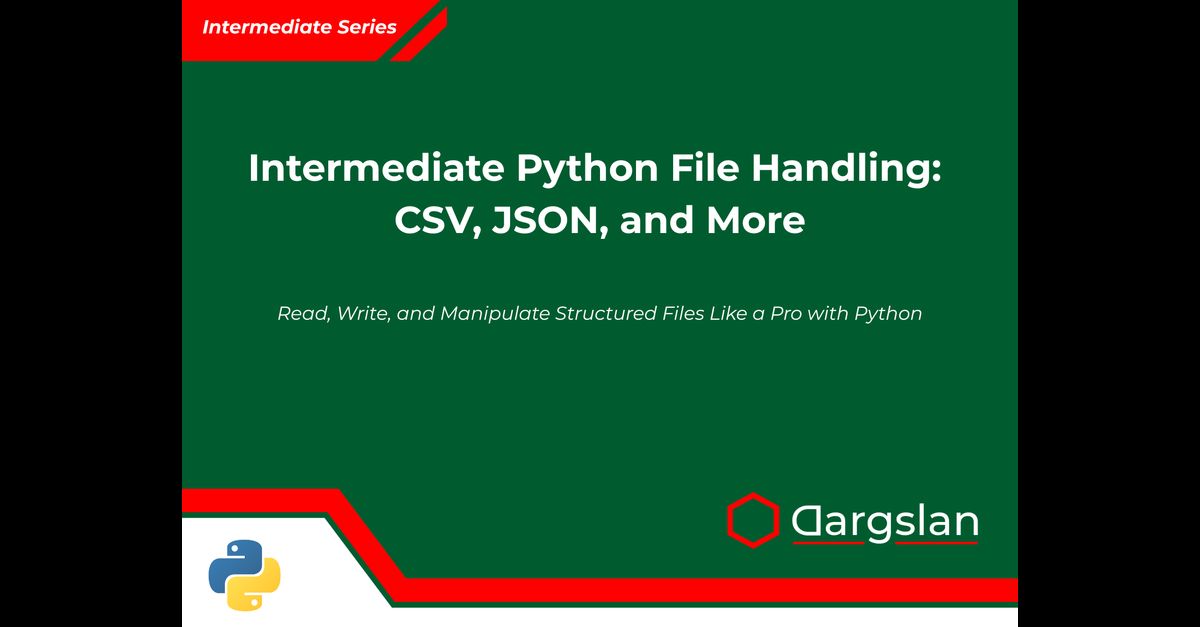
Intermediate Python File Handling: CSV, JSON, and More



